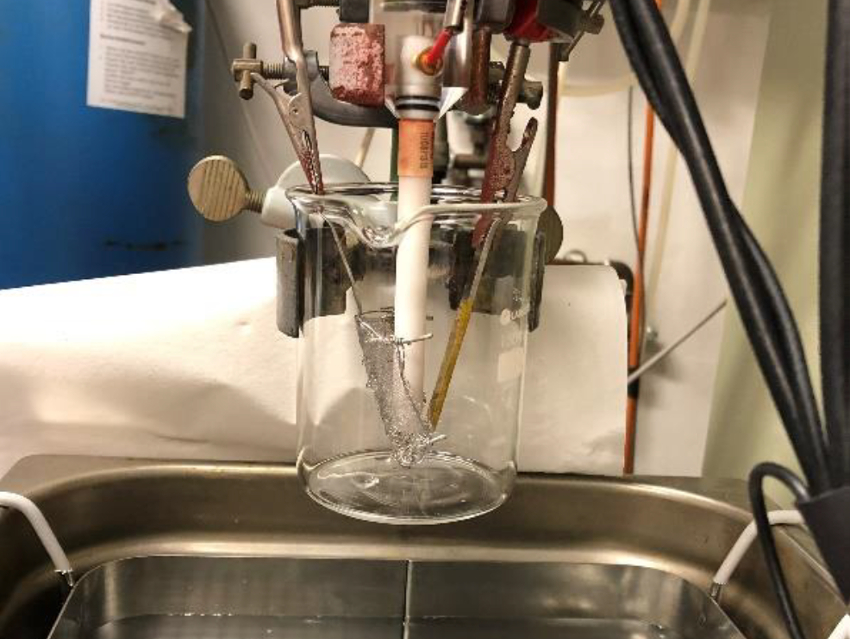The development of electrode materials for highly efficient water electrolysis is an important challenge on the path to replacing fossil fuels with hydrogen. Helmut Schäfer, University of Osnabrück, Germany, and colleagues have found that, under certain circumstances, modified stainless steel can reach an efficiency similar to platinum towards promoting the hydrogen evolution reaction. This reaction is the cathodic half-cell reaction in water electrolysis.
Usually, the electrodeposition of noble metals from their dissolved metal salts is used to improve the electrocatalytic properties of less active materials. However, only a small fraction of the dissolved noble metals reaches the substrate, which makes this inefficient. During simple polarization experiments carried out in sulfuric acid with a Pt counter electrode and a steel cathode, the team found that Pt can be transferred to the steel electrode with almost 100 % yield, i.e., without accumulation of Pt in the electrolyte.
The resulting modified electrode contains only 18 μg Pt per mm2 of electrode area, but has a drastically increased activity for hydrogen evolution compared to the original steel. It could replace pure platinum metal, for example, in proton-exchange membrane (PEM) electrolyzers. These devices are used for the storage of renewable energy from wind or solar power plants.
- From bad electrochemical practices to an environmental and waste reducing approach for the generation of active hydrogen evolving electrodes,
Lisa Ring, Bruno Pollet, Marian Chatenet, Sofyane Abbou, Karsten Küpper, Mercedes Schmidt, Marten Huck, Aurelia Gries, Martin Steinhart, Helmut Schäfer,
Angew. Chem. Int. Ed. 2019.
https://doi.org/10.1002/anie.201908649




